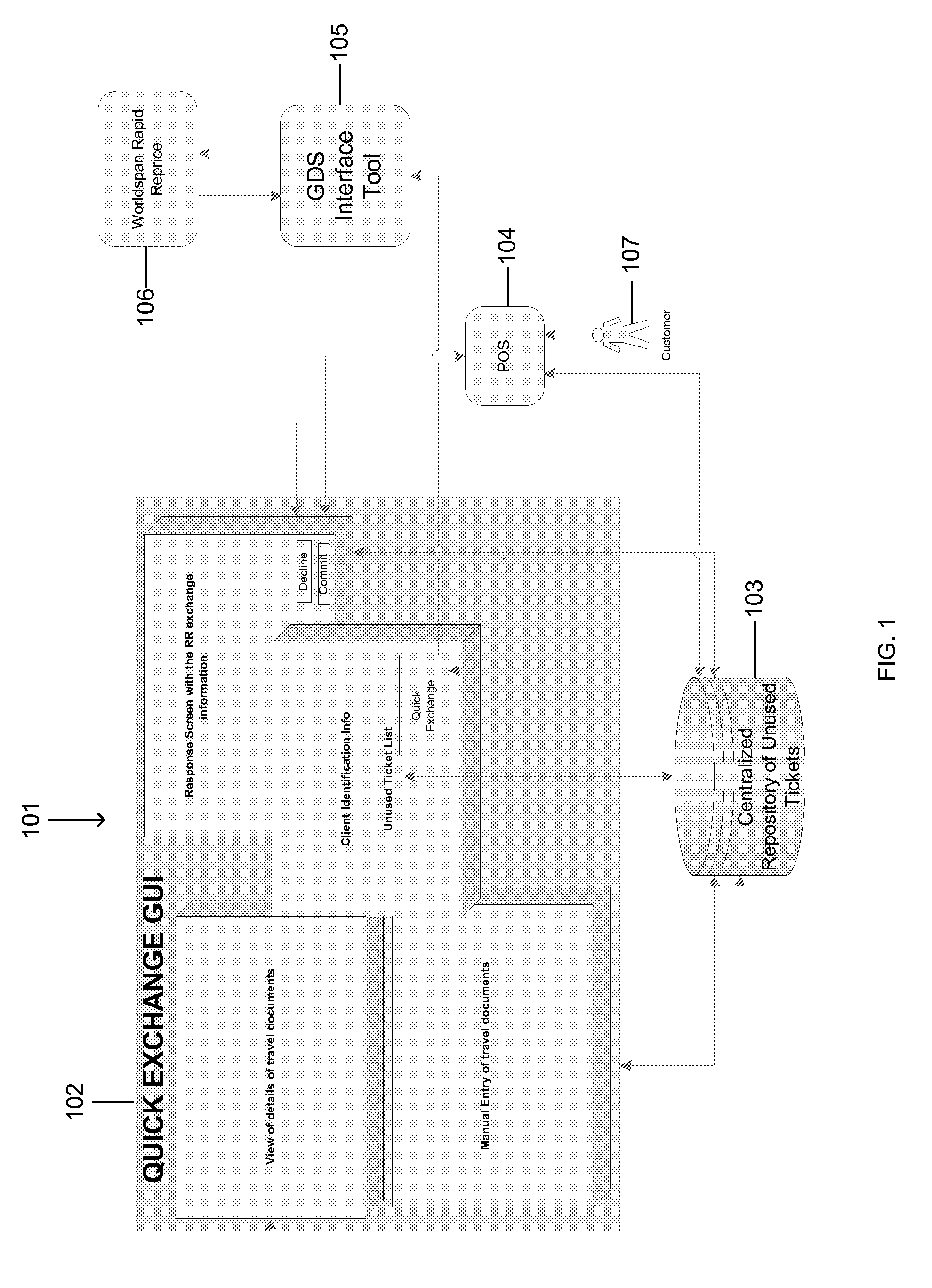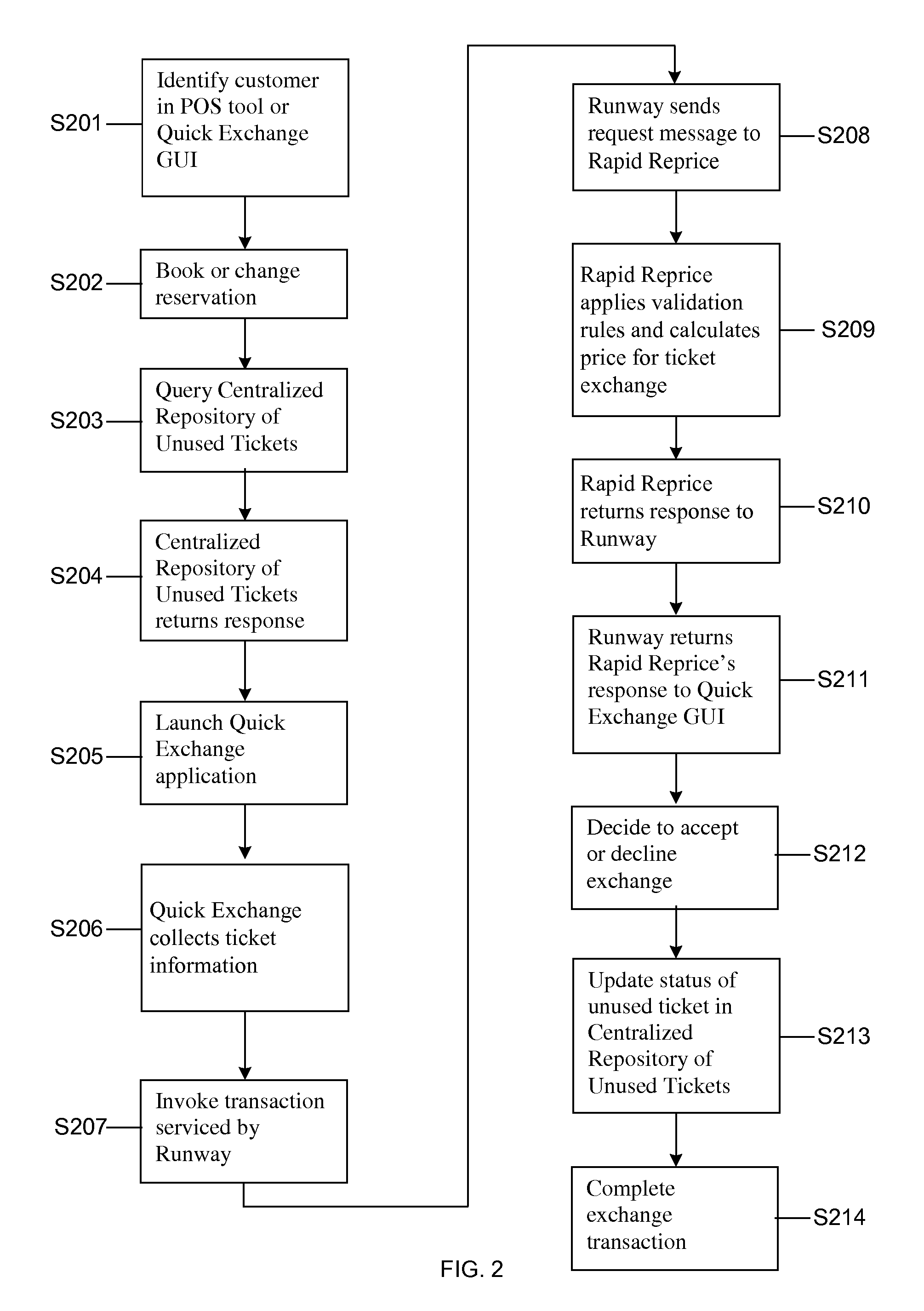System and method for redemption and exchange of unused tickets
a technology of unused tickets and systems, applied in the field of methods of can solve the problems of exacerbated failure to timely use tickets and/or to redeem unused tickets, total loss for the purchaser, and complex history of travel scheduling and rescheduling, etc., to facilitate the redemption and exchange of unused tickets, eliminate adverse financial consequences associated therewith, and eliminate the effect of unused tickets
- Summary
- Abstract
- Description
- Claims
- Application Information
AI Technical Summary
Benefits of technology
Problems solved by technology
Method used
Image
Examples
example implementations
[0066]The present invention, or any part(s) or function(s) thereof, may be implemented using hardware, software or a combination thereof and may be implemented in one or more computer systems or other processing systems. However, the manipulations performed by the present invention were often referred to in terms, such as adding or comparing, which are commonly associated with mental operations performed by a human operator. No such capability of a human operator is necessary, or desirable in most cases, in any of the operations described herein which form part of the present invention. Rather, the operations are machine operations. Useful machines for performing the operation of the present invention include general purpose digital computers or similar devices.
[0067]In fact, in one embodiment, the invention is directed toward one or more computer systems capable of carrying out the functionality described herein. An example of a computer system 300 is shown in FIG. 3.
[0068]The comp...
PUM
 Login to View More
Login to View More Abstract
Description
Claims
Application Information
 Login to View More
Login to View More - R&D
- Intellectual Property
- Life Sciences
- Materials
- Tech Scout
- Unparalleled Data Quality
- Higher Quality Content
- 60% Fewer Hallucinations
Browse by: Latest US Patents, China's latest patents, Technical Efficacy Thesaurus, Application Domain, Technology Topic, Popular Technical Reports.
© 2025 PatSnap. All rights reserved.Legal|Privacy policy|Modern Slavery Act Transparency Statement|Sitemap|About US| Contact US: help@patsnap.com



